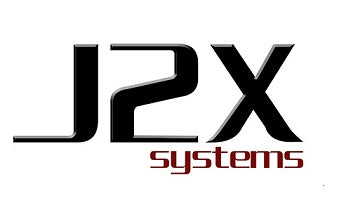You just found out that a critical terminal is nearly out of stock and will soon cause production to stop. Thoughts start to flash through your mind. What went wrong? Will I still be able to deliver to my customer on time? How much is this going to cost me?
You start to investigate and soon learn that you ordered and received enough terminals but you also confirm that you are nearly out of stock. You ask yourself, “What happened to my terminals?”
Talking to your team and reviewing scrap records you find that roughly two terminals are being scrapped for every good circuit produced. Now you know why you're out of terminals, but you still don't know the cause of the scrap. Your first inclination might be to blame the operator or a bad assembly die but before you place blame there are some simple things that need to be checked.
First, you need to physically verify what happens to a reel of terminals when it comes through your door. Your vision of the receipt of those fragile parts may be similar to that of a mother cradling her newborn baby but that vision may be far from reality. It could be that in the course of “normal” receiving activities the material is being treated like yesterday’s garbage. For example, if your receiving protocol requires that terminal packages be opened for inspection were they properly repackaged? Incomplete or missing terminal packaging is often the cause of material damage.

A second stop needs to be your terminal storage setup. Bad storage practices can cause terminal damage even if the packaging is intact. Damaged terminals are often caused by poor shelving practices. Almost every terminal manufacturer recommends that single wrap reels be stored flat with the carrier strip down but end feed terminals need to be stored with the reel on edge. Improper storage, even with the presence of a paper interleaf, can result in tangles, bending and serious carrier strip deformation. If you observe these storage issues you are virtually guaranteed that termination problems and an increased scrap rate is being passed downstream.

The next area to investigate is the system used to handle and transport terminals between the storage location and the point of use. The assessment criteria for this element is simple. Look at your terminal reels. Are the edges and sides of the reels smooth and straight and is the arbor hole round? If the edges look torn and tattered or if the arbor hole resembles a soggy doughnut you have a problem. Sure, there are terminals that can tolerate being yanked through tangles and catch points without significantly affecting the crimping process but, as a general rule, the condition of the terminal packaging directly impact your first time crimp quality.
There are also some simple tests that can be done at the crimping press (either manual or automatic) that can help you identify root cause problems. A common culprit that increases scrap production is poor alignment between the terminal reel and crimping die. This condition can cause binding and distortion in the stock creating feed and monitoring issues. I have noticed that in some locations this relationship is routinely ignored and the problems created are incorrectly attributed to the assembly die. This condition exists despite the fact that virtually every press and automatic cutter includes devices expressly designed to avoid this problem. I personally think that the problem is so prevalent because manufacturers often neglect to explain why these features were included with their equipment and how even more infrequently explain how they should be used.

This is a shame as verification of the correct die to terminal feed alignment is simple. All you need to do is to sight between the sides of the terminal reel to verify that the die feed track and the terminal strip lay within the same axis. Any side to side (Y axis) variation of the terminal strip should be avoided. If adjustment is necessary it is quick and easy often requiring no tools or gauges. Simply slide the rear reel collar on the arbor to a location where the terminal strip and the die feed track align (see Figure 2). Once this has been accomplished push the front collar against the reel until a consistent and uniform drag is achieved. Finally adjust the terminal strip flipper to smooth out any Z axis variation that might exist.
The last area to check is the press itself. Once again the procedure is simple requiring only a pencil and a few minutes. The first step is to grasp the press ram and shake it to determine if any side to side movement can be induced. If movement occurs the press gibs need attention. Next grasp the die bolster plate and the attached die locating features. Once again, if any movement is detected maintenance should be notified. The final check is to determine if the press is braking properly. This can be done by drawing a horizontal pencil line on the ram and gib to indicate where the press last stopped. Now cycle the press multiple times to verify that the ram consistently stops in approximately the same position.
These five simple checks can be completed in 30 minutes or less without any tools or special training. They have been proven effective in reducing scrap and improving overall crimp quality. A surprise benefit you may notice by regularly performing these simple checks will be the ability to reduce your crimp monitoring tolerances as well as your operator’s frustration.
Try these simple checks in your plant. After all, they cost you nothing, and, even if they aren’t the cause of your problem they are practices that should be a part of your everyday manufacturing culture.

